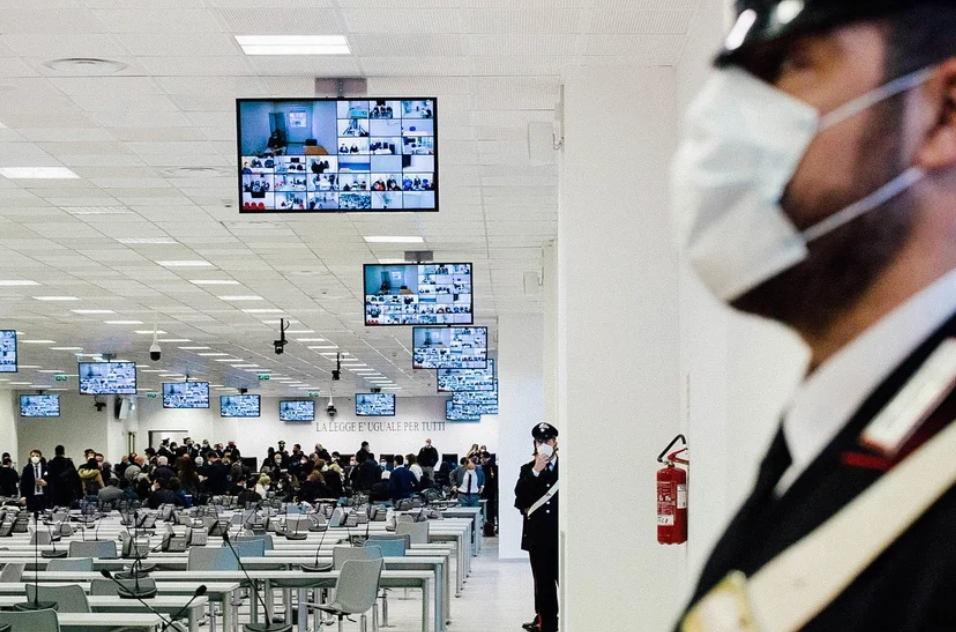The mafia trial of the century is going largely unnoticed
on 'Zoom' in southern Italy

The Silent Trial of the Century
In southern Italy, a historical event is going
unnoticed. That’s partly by design.
With 400 counts against 335 defendants, it's one of the largest criminal
prosecutions in recent history. And there is shockingly little news coverage
(partly by design)
In Lamezia Terme, an industrial city in Southern Italy overlooking the
Tyrrhenian Sea, the first so-called “maxi
trial” of the ’Ndrangheta, the Calabrian criminal organization, began on
Jan. 13.
Expected to last at least two years, the trial is known as “Rinascita-Scott,” or
“Rebirth Scott.” Nicola Gratteri, the
prosecutor driving the case, explained that its name refers to a U.S. Drug
Enforcement Administration agent who spent eight years in Italy fighting against
narco-’ndranghetist organizations and
died upon returning to the United States in a car accident. The trial is
dedicated to his commitment. It’s been called the trial of the century in some
Italian newspapers, but curiously, no television news stations are reporting on
it, it never ends up on the newspapers’ front pages, and it’s not even creating
political controversy.
&uuid=(email))
This despite its huge scale and dramatic scenes: Everything takes
place in a bunker built just for the occasion, at a cost of 4.7 million euros.
It was an abandoned call center transformed over five months into a
record-breaking courtroom that belies the fame of Calabria, which is known as
the region of unfinished work. It is a structure of 35,500 square feet, where
947 people can sit at a safe distance, in compliance with COVID regulations.
It is a maxi trial via Zoom, because many defendants follow the hearing
from their prisons, dressed in overalls, carefully taking note of names and
villages—all, strictly, with masks.
This giant event is observed in silence in Italy. The reasons are many. For one,
the fight against organized crime has long ceased to be a priority of the
Italian government. In recent months, COVID has consumed all interest and public
debate. And there is also a certain amount of inurement among the Italian people
to news about the mafia. This is partly by design: After the attack season of
the ’90s,
with the killing of Giovanni Falcone and Paolo Borsellino the two Sicilian
magistrates on the front line in the fight against the Cosa nostra Sicilian
mafia, these criminal organizations have believed that it is better to avoid
sensational actions that bring the focus on them, and it is usually better to
work under the radar. Crime in Italy has also changed its face: Previously
mainly in the southern regions, it has spread throughout Italian territory,
concentrating in the richest part of the country, in the north. There, it has
abandoned the somewhat folkloric characteristics of its origins and has
camouflaged itself in the wealthy modern northern entrepreneurship and in
politics. It has used the proceeds of drug trafficking to invest in legal
activities, from finance to catering to construction. During COVID, its
involvement in the
funeral business made headlines.
In the public perception, the ’Ndrangheta has historically been considered the
least relevant and powerful criminal organization. But in reality, especially in
the last 10 years, it has become the dominant one, not only in northern Italy
but also in many European countries, including Germany.
slate.com